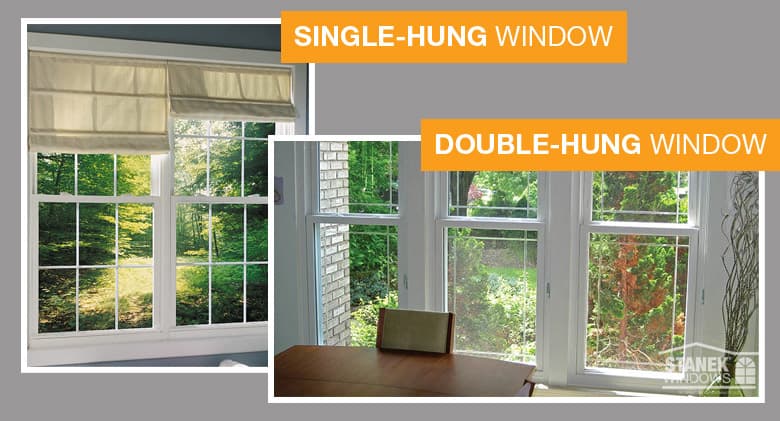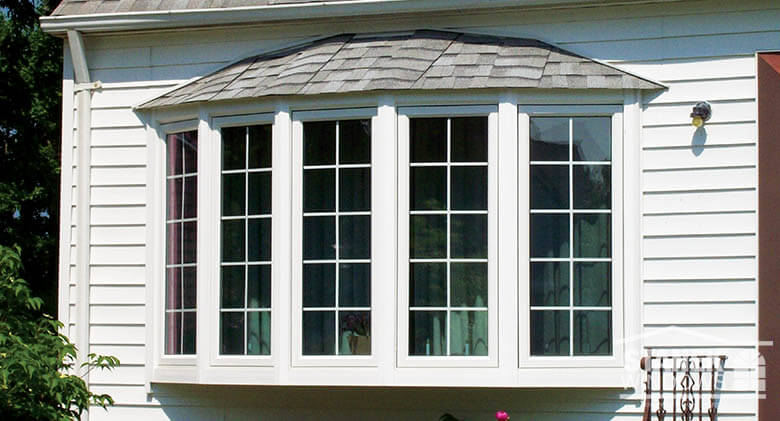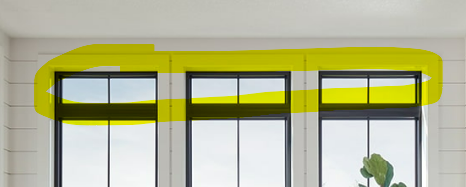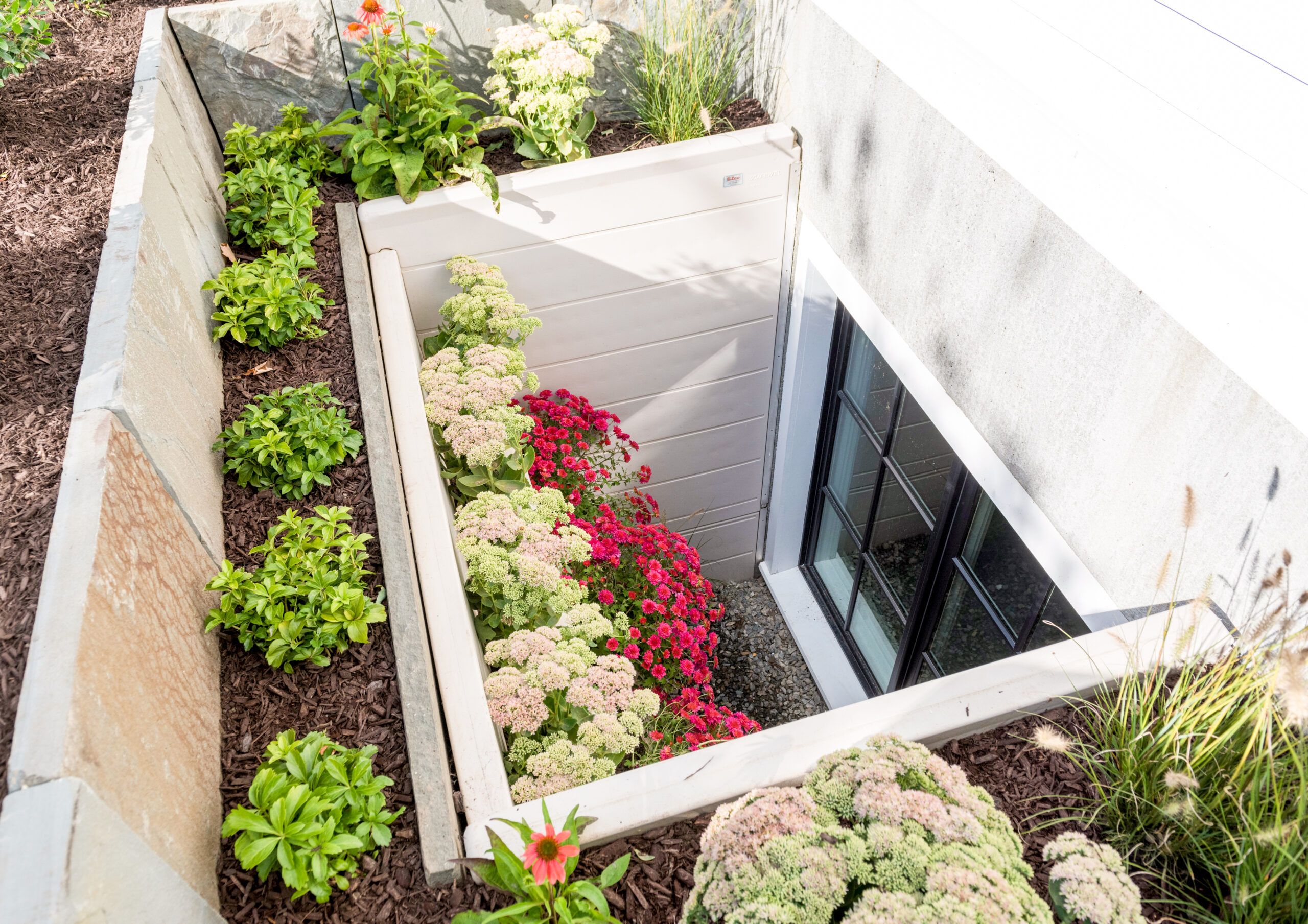You will be pleasantly surprised to know there are endless types of windows to choose from when you select new windows.
While you might feel like most homeowners work with view windows as something to look out of and let air flow through, the truth is there are so many types of windows you can choose from.
Since making a selection when presented with so many options can be challenging, today, we will share the most common types of windows and a few others!
Terms to know:
- Sash – the area around the window that moves with the window
- Casing – the housing around your entire window (usually white)
The Most Common Types of Windows:
Below is a list of the most common types of windows, followed by a list of the more irregular windows. Single-hung and double-hung windows are the most common windows, and when getting your windows replaced, this is what types of windows most homeowners will consider.
1. Single-Hung Windows (Single Sash Window)

The most commonly used windows in homes nationwide are single-hung windows or double-hung windows. While they both look the same in most cases, a few differences are worth pointing out.
Single-hung windows only open on the bottom half, making them ideal for airflow and replacement. The upper portion of the window is stationary and does not move, while the bottom half slides up and down. They are known to be slightly less expensive than double-hung windows.
2. Double-Hung Windows

Like their single-hung counterparts, double-hung windows offer two movable sashes that can each be opened. This means the top potion can slide down or pivot open like the bottom. The upside to this is a more versatile window that is easier to clean and offers more ventilation. Most homeowners like a double-hung window for entertainment areas or bathrooms for extra ventilation.
3. Casement Windows
Casement windows are hinged windows that open outward to the right or left, similar to your door. Sometimes people will refer to casement windows as “Crank Windows,” and they are commonly used in bathrooms or over sinks.
4. Sliding Windows
Single-hung and double-hung windows slide up and down, and sliding windows slide left and right (think of a drive-thru window style). You can have a single, double, or three-pane slider with sliding windows. These windows are great for bathrooms or if you have ample space for a window and don’t want to use a picture window.
5. Picture Windows

Delivering an unobstructed view, picture windows are beautiful windows that offer an amazing view without restrictions. While they don’t allow airflow, picture windows can be cheaper than mechanical ones because they require no mechanical elements. The only downside is sometimes they can lead to more energy loss.
6. Bay Windows
Bay windows are more than just a window style; they are a series of windows that extend outward from the house and are often covered with metal roof coverings. Most homeowners love bay windows because they add architectural depth and natural light, but they are known to be expensive. Most of the time, bay windows do not open and are 9 – 12 pane windows.
7. Hopper Windows
Hopper windows are sometimes called basement windows since they are small rectangular single-sash windows. They open inward from the top and are ideal for ventilation, and they’re not necessarily used for sunlight. These can range in opening from 45-90 degrees.
8. Bow Windows

Popular in older historic areas of cities, bow windows are very similar to bay windows; they are typically larger and form more of an arch shape. A lot of people will refer to a bow window as the same as a bay window. However, the difference is the number of windows. Bay windows generally have a central window with two flanking windows, three total. Bow windows can have four or more windows.
If your home does not have an existing bow window, you would have to get with a contractor to remodel the area to install a bow window.
9. Awning Windows
Unlike hopper windows, which open top-down, awning windows open from the bottom up. These are cool windows because they can be open during a rain storm – hence “Awning – and they’re usually higher up near a home’s roofline or in a bathroom. They will usually let light in and fresh air, and a standard home may one if any.
7 Other Less Common Window Types:
1. Garden Windows
When you think of garden windows, think of a greenhouse. Similar to how bay windows jut out of your home, garden windows also protrude out (usually 12 inches) and form a box of windows. Many people will often stick plants, cactus, and other items in these windows, and they are less common to see.
2. Decorative Glass Windows
The decorative element of glass windows is more common in churches, but every now and then, homeowners may have decorative glass windows installed above a door, in a bathroom, or where they want privacy.
3. Transom Windows

Ever seen the smaller rectangular window above a door or another large window? These are transom windows that are meant not to be opened. They get their name for letting light through, and they’re almost always rectangular in shape. However, sometimes you may see a half-moon-like shape. The idea is that these windows can let more light in.
4. Jalousie Windows
Made of multiple slats of glass, jalousie windows are unique-looking windows commonly found in historic cities because of their versatility and style. Similar to old-school plantation-style blinds/shutters joined on a track and open and close, almost like blinds.
5. Glass Block Windows
Sometimes you see frosted-style windows on the bottom floor of a commercial building – rarely a home – commonly called glass block windows. While they used to be more popular, these individual blocks have concrete mortar between them. Therefore, they don’t open and close. They emit light into the area of the room they are installed in.
6. Round Windows
Round windows are self-explanatory. Usually found above a front door higher up on a home, round windows let light in and are used to add curb appeal. Unlike casement windows that open and close, round windows let natural light into larger spaces like foyers or great rooms.
7. Egress Windows

Egress windows (pictured above) are usually found in basements that open up to a small area that serves as an emergency exit. Typically, residential codes may require a certain amount of emergency exit options, hence using an egress window. The actual window frame could be double-hung, single-hung, or even awning.
Frequently Asked Questions:
What are the most common replacement windows installed?
Double-hung windows, followed by single-hung windows, are the most common replacement windows for residential homes. A picture window, fixed window, or awning window are nice compliments but are more accent windows.
What windows are the most budget-friendly?
Single-hung windows are the most budget-friendly, offering energy efficiency, the ability to open and shut quickly, and natural light. They are slightly cheaper than their double-hung counterparts because they require fewer mechanical components.
How many windows does the average house have?
According to most articles, the average single-family home has eight windows; however, industry experts will say the number is realistically closer to 15-20 windows per house. Factors that determine the number of windows include window styles used, the number of rooms (most rooms have to have at least one window), and the size of the home. A townhome, for example, might have fewer windows since it only has windows in the front and back.
How long does it take to install new types of windows?
The average window installer will take 45-60 minutes to install each window. So if a home has 10 windows, you can expect this to take 10 hours or about 1.5 days. Simply count your windows and calculate the number hours at a ratio of 60 minutes per window.


 Metal Roof vs. Shingle Roofs – The Pros, Cons, and Which is Best!
Metal Roof vs. Shingle Roofs – The Pros, Cons, and Which is Best!